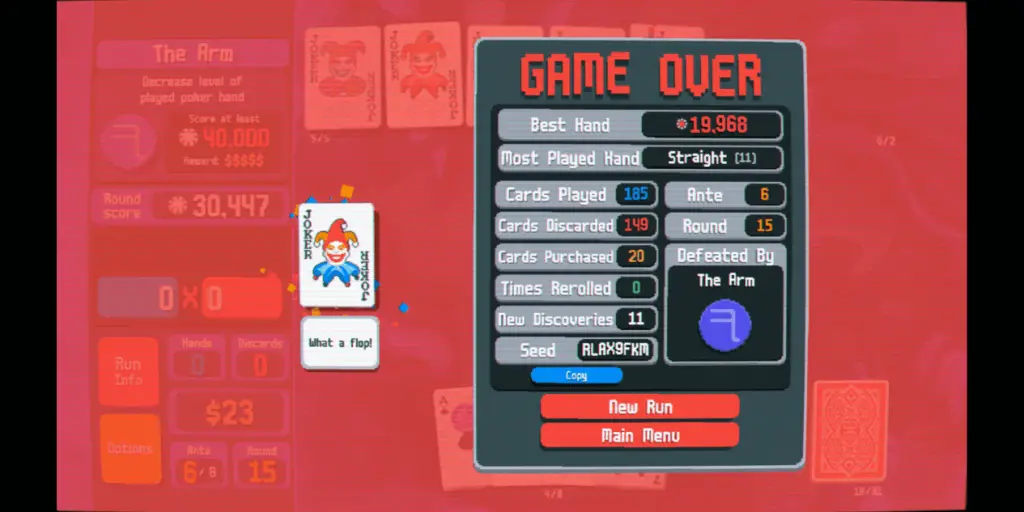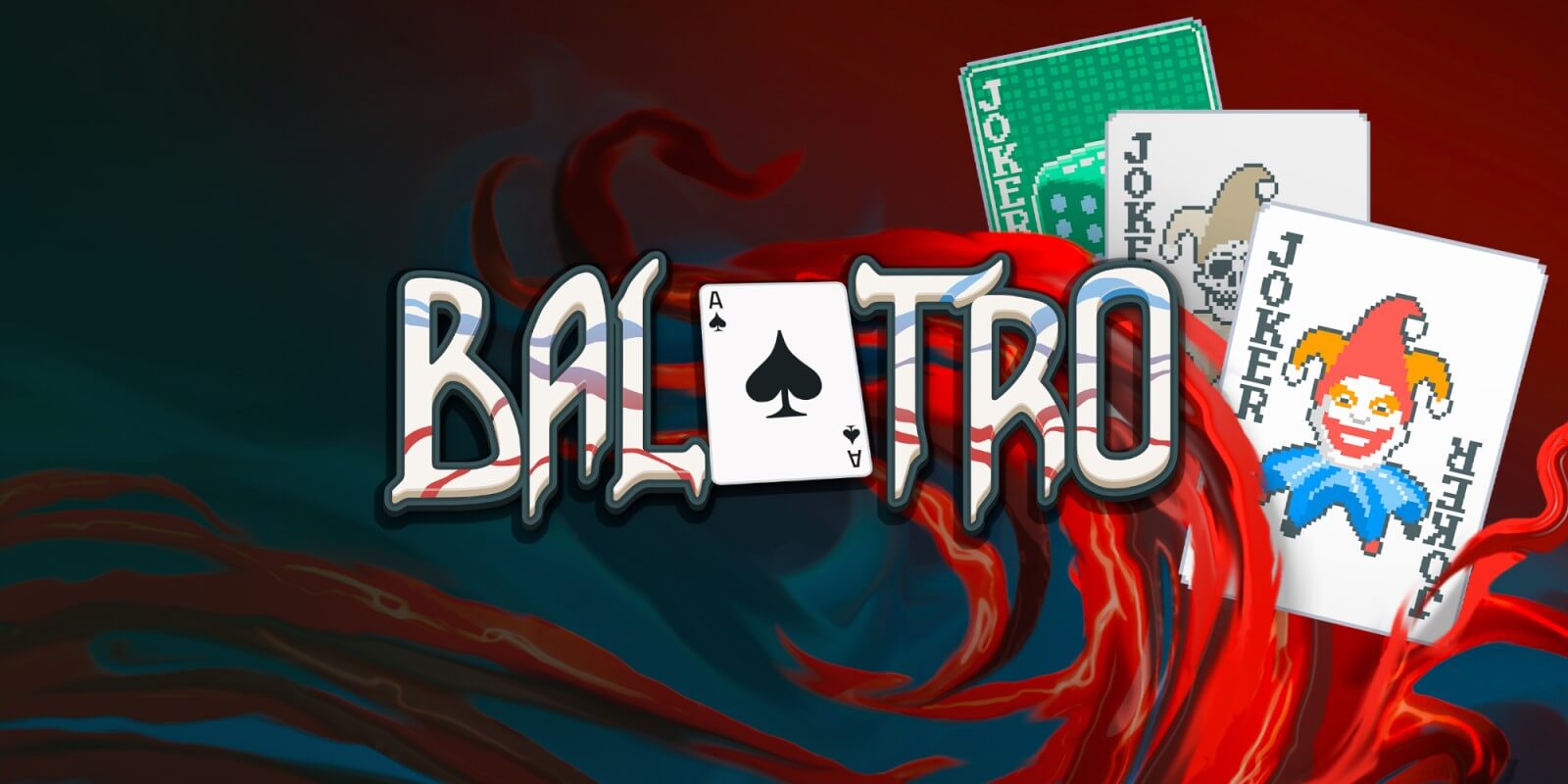At the time of writing, Balatro holds steady at a 97% positive Steam user rating nearly three months after release, with over 30,000 reviews. This immense popularity is thanks to a well-crafted demo and, as a result, plenty of coverage from the press, but it could be argued Balatro’s biggest reason for success is the sheer fun of it.
Much like in Balatro itself, luck may have been a factor in its success, but had the game’s demo not been an addictive and fun package, would the press have given it so much attention? I doubt it. If you’ve somehow avoided Balatro for this long, here are just a few reasons why you might want to check it out.
Plenty Of Unlocks

Although Balatro allows players to unlock everything the game has to offer in a single button press, players would be doing themselves a disservice by using it. It could be argued that much of the fun to be had in Balatro is through unlocking new content. This is primarily because the drive to unlock new things is arguably what drives players to experiment with different strategies.
While players may play ten or twenty hours of the game before they even think about intentionally seeking out new unlocks, it could be argued that the sheer number of them is a large contributor to the game’s tremendous replay value.
A Plethora Of Unique Starting Decks

You could play Balatro for at least ten hours, just using one starting deck. However, Balatro features a great deal of starting decks, each of which offer their own unique strengths and weaknesses.
From the mundane starting decks such as the Red and Blue decks (which simply grant +1 discard per round and +1 hand per round, respectively), all the way to the Green deck that removes the ability to earn interest while granting the player bonus cash through other means, these decks offer a variety of unique challenges. The Chequered deck, for example, starts players with 26 Spades and 26 Hearts, while the Abandoned deck starts players with no face cards.
Although these starting decks aren’t completely game-changing, especially the ones players start with, many of them offer a unique spin that forces players to play the game differently. This further adds to Balatro’s replay value and enhances the fun by getting players out of their comfort zone and manipulating them into experimenting with the game’s different mechanics.
Chance-Based Effects

Borrowing heavily from Poker and Casinos, Balatro is inherently infused with a great deal of RNG. While it does feature plenty of ways for players to manipulate this RNG in their favour, there remain a great deal of moments in which players are forced to take a leap of faith.
However, this addition of light gambling and risk-taking isn’t a bad thing at all. In fact, it could be argued that it’s what provides much of the excitement in Balatro. Building synergies and crafting the perfect deck is satisfying, yes, but the peaks of excitement are much higher when, say, the Wheel Of Fortune pays out its 1 in 4 chance and adds Polychrome to a Joker.
The same could be said of the 1 in 4 chance for Glass cards to break, or the 1 in 15 chance to gain $20 from a Lucky card. These chance-based effects are sparingly littered throughout Balatro, injecting just the right amount of gambling to an otherwise strategic game.
Challenge Runs

One gimmick that Balatro pulls off particularly well is its variety of unique challenge runs. Each of these challenges are distinctive, providing their own unique trials and tribulations for the players to face.
There are a total of twenty challenges in Balatro, but they need to be unlocked before the player can attempt them. “The Omelette” is the first challenge, and it’s remarkably difficult. When attempting this challenge, players begin the game with five “Egg” Jokers (Gains $3 of sell value at the end of round), but Blinds give no reward money; extra hands no longer earn money, and players earn no interest at the end of the round. While this may sound like a financial headache, it proves to be a fun and engaging challenge, much like many of Balatro’s challenges.
A Universal Theme

One of the best aspects of Balatro, and arguably what made it such a commercial success, is its universal theme. That is, its lack of a theme. Well, that may not be fair to say; Balatro has a consistently Casino-like atmosphere and visual style created by its warbling CRT effects, whimsical pixel-art, and its occasional nods to slot-machine visuals.
Since Balatro looks essentially like Microsoft Solitaire but with pixel-art and a few fancy effects, it immediately removes many of the potential presumptions players may have had about the game. For instance, if Balatro had been themed as a fantasy dungeon-crawler, players may have expected a different game. However, by looking at exactly how it plays, Balatro perfectly sets expectations.
Build Variety

Balatro’s tight gameplay loop and accessible theme may make it an easy sell, but it’s the build variety present in the game’s many systems that allow players to come back time and time again without getting bored.
This is in part thanks to the aforementioned starting decks which, as mentioned, force players to experiment with different strategies. However, it’s Balatro’s iconic collection of a whopping 150 Jokers that give it its ridiculous replay value. Add to that the 12 unique planet cards, 22 distinct Tarot cards, and 18 powerful Spectral cards, and players are left with limitless decisions to make. That’s not even taking into account the 32 different Vouchers that players can acquire over the course of a run.
A Smooth User-Interface

Although Balatro’s universal theme makes it an accessible experience for all, it’s the game’s elegant user-interface that makes it so easy – and so fun – to play. The friction-free experience of interacting with Balatro ensures players always have the information they need, and allows players to focus on their strategy rather than crawling through convoluted menus and pop-ups.
For example, players can see their current chip value and multiplier at all times, as well as their variety of Jokers and consumable cards. Seeing what these cards do is as easy as hovering over them, and changing the [important] order of your Jokers is as simple as clicking and dragging.
Furthermore, Balatro’s interface isn’t just elegant, it’s fun to interact with. Light (and optional) screen-shake, wobbly text, satisfying buttons, and cards that react to the touch of the mouse make simply interacting with Balatro a fun experience.
Easy-To-Learn, Hard-To-Master

Balatro’s elegant user-interface makes it a tactile and accessible game that almost anyone can play, and its abstract theme gives it near-universal appeal, but in the end of the day it’s Balatro’s brilliant game design that takes the cake.
From the very beginning, Balatro wears its accessibility on its sleeve. Players needn’t even know how to play Poker to enjoy its gameplay, for the game provides players with a handy list of [almost] every Poker hand. With that said, players will soon find themselves having memorised most, if not all, of these hands.
Balatro’s tutorial is quick and easy to follow, and due to the nature of the game, players are slowly eased in overtime because Balatro is a very simple game on the surface (players simply play the best hand they can find out of the cards available), the game is very basic to begin with. As each run progresses, however, Balatro reveals its many complexities and nuances, drip-feeding the player strategic decisions.
The Notorious Flames

Developer LocalThunk has packed Balatro with buckets of whimsy and an array of nuanced gameplay mechanics, but it’s perhaps Balatro’s most simplistic mechanic – if you can call it that – that makes it so satisfying to play.
I am, of course, talking about the blistering flames that erupt from the score multiplier as players increase their score above the required Blind. The slowly increasing crackle of the flames, the simple yet satisfying visuals of their flaming tendrils, and the animated text of the chip and multiplier values as your score soars over the required amount is truly a feeling like no other.
Conclusion
Overall, there are many parts at play that make Balatro so fun to play. From its addictive nature and smooth user-interface, to its tremendous replay value and whimsical visuals, Balatro is arguably one of the most accessible and easy to learn rogue-likes on Steam.
If there’s something about Balatro that you love that isn’t on this list, be sure to let us know on Discord, Twitter, and on our YouTube channel.







